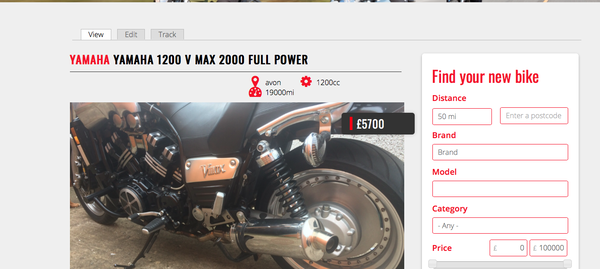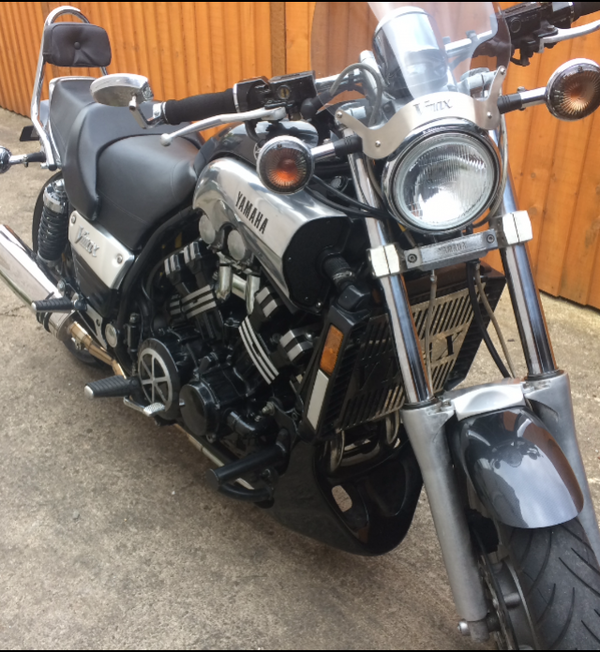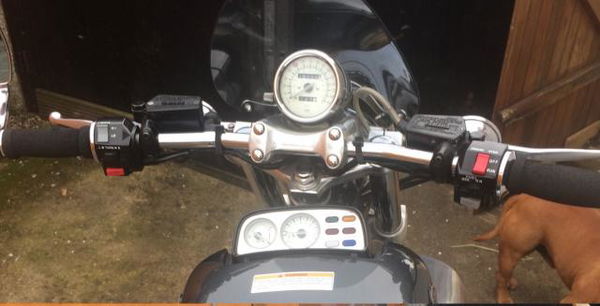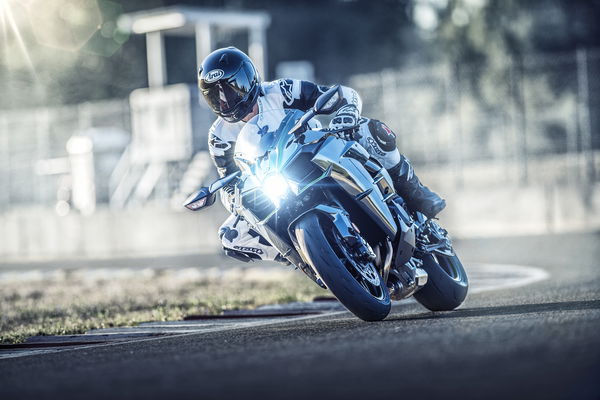Weekly Visordown Marketplace watch
We pick out one of the thousands of bikes on the Visordown Marketplace for a closer look...

THE VISORDOWN Marketplace classified section is packed with sweet wheels for every pocket, and every two-wheeled desire! Each week, our man Tony Middlehurst is going to pick out a bike for sale, and give it the once-over. This week - it's a full-power old-school Yamaha V-Max; not for the faint of heart!

2000 Yamaha V-Max
If you’re in the aviation business, you’ll know about V-speeds. If you don’t, I’m not getting on your plane.
V-speeds are important airspeeds for any given aircraft. So, for example, VLOF is liftoff speed, VS is stall speed, and V3 is flap retraction. That last one can also be applied to nervous passengers like me.
Although the correct V-phrase for a plane’s top speed is actually VMO (maximum operating limit) or VNE (never exceed), someone somewhere decided to invent a new and more emotive phrase to describe the top whack of earthbound vehicles: V-Max.
That someone could well have been the bod at Yamaha who was tasked with coming up with the name for a 1200cc V4-powered motorcycle whose main job was to look mad and go even, er, madlier. The V-Max was created by a chap called Atsushi Ichijo from the Tokyo-based design house GK Dynamics, with input from Yamaha US’s bike planning boss Ed Burke and none other than Britain’s very own custom bike genius John ‘Uncle Bunt’ Reed. Here’s a vid you might like https://www.youtube.com/watch?v=mCeWKUyMKFM
Slightly unbelievably, the V-Max (or, after 2009, the injected VMAX) has been frightening folk since 1985, although we didn’t get it in the UK until 1991. It started with a restricted 95bhp, went on to ‘full power’ 121bhp from 1996, and got a big hike in 2009 with the arrival of a monster 1679cc fuel injected motor claiming 197bhp. Sadly, that bike no longer appears to be in the Yamaha UK range.

Still, even the humble 1200 is no bike for the faint-hearted. Not so much because of the power as of the weight – 262kg, or 576lb in British. That, plus softish suspension and the added unsprung weight of a hefty shaft drive, means that corners are more or less relegated to the status of straight-connectors.
That’s OK however because the V-Max is a hoot in a straight line. It still features high up on the list of fastest quarter-milers, an American road tester having achieved a 10.11sec run on the 1700cc 2010-spec machine. That’s the same as a 2016-spec Yamaha R1, which is not messing about, especially for a naked machine. The loudest noise at the relatively low 137mph terminal speed would have been the rider’s shoulder muscles screaming.
At 5,750rpm the V-Boost system begins to open butterfly valves in the intake manifolds, squirting extra fuel into the cylinders at an increasing rate. By 8,000rpm the valves will be fully open. Your sphincter might not be though. Ride it on V-Boost and the 15-litre underseat petrol tank will struggle to deliver more than 100 miles, but you’ll have wanted a rest long before that point anyway. The thing that looks like a tank is actually a small storage box. The riding position is quite comfy for the upper body, but lanky riders might feel a bit cramped in the leg department. The two-part dash still looks cool.

£5,700 may seem like strong money for our 2000-vintage Marketplace bike, especially given the decent choice of V-Maxes on the market, but the mileage is low and it does have plenty of nicely considered (and not cheap) mods such as the ‘solid’ split rim rear wheel and the full stainless steel Delkevic exhaust which currently retails at around £550. Plus, the last time the VMAX appeared on UK price lists it cost £16,120. If the vendor is happy to negotiate, you could get a sweet deal on a bike that, for once, pretty much merits the overused word ‘iconic’.
Cheery Stuff
Build quality is high, the seat usefully low, making it surprisingly easy to ride slowly. You’ll understand why the seat has a step in it when you crack the throttle off the line. It’s a toy, really.
Leery Stuff
Suspension is rudimentary and the tank range is hopeless, otherwise there’s not much to fear. Poor starting is often down to nothing more scary than an old battery.











